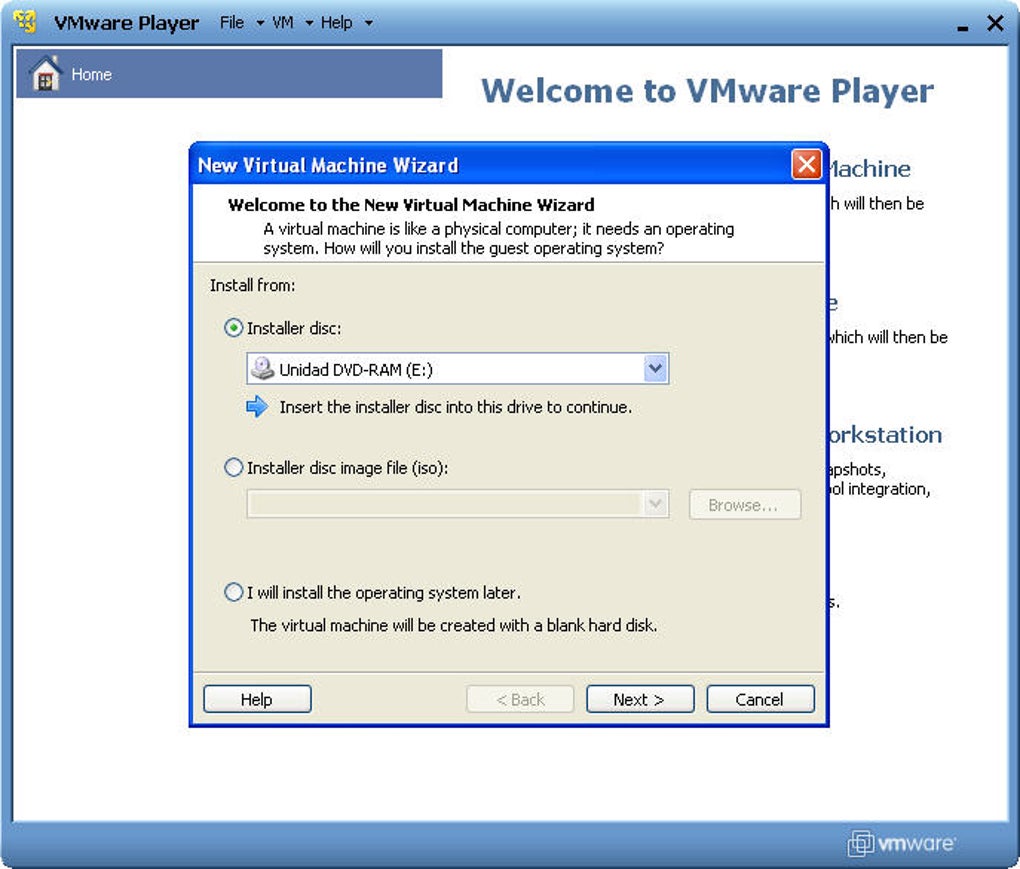
.png)
We haven't come across any problems during our tests and strongly recommend VMware Player to all users. VMware Workstation Player takes up a moderate amount of system resources and contains a well-drawn help file.

Data can be imported from VMX, VMC, OVF or OVA file format. Moreover, you can customize its hardware when it comes to memory, processors, new CD or DVD, floppy, network adapter, USB controller, sound card, printer and display. Right before finishing the process, you can view the name, location, version, operating system, hard disk, memory, network adapter and other devices corresponded to your new virtual machine. The latter option simplifies the process of moving the virtual machine to another computer but it could reduce performance on very large disks. Splitting a virtual disk and customizing its hardwareįurthermore, you can store the virtual disk as a single file or split it into multiple ones. Now you can give your new virtual machine a name and specify its output directory, as well as allocate its maximum disk size (in GB). In addition, you can select the guest operating system, which can be Microsoft Windows, Linux, Novell NetWare, Sun Solaris or other, as well as select the version (e.g. Otherwise, you can opt to install the respective virtual machine later. So, you can install from a disc or from a disc image file (ISO file format). The first step requires you specify the source file. Rookies may take advantage of the built-in wizard and follow the steps for creating a virtual machine. You can create a new virtual machine, which is added at the top of your library.

The user interface of the application is standard. For example, you can have Windows XP installed on top of your Windows 7. VMware Player is a program which allows you to run multiple virtual machines on your operating system and easily juggle them.


 0 kommentar(er)
0 kommentar(er)
